Centipede vs St Augustine Grass: Choosing the Right Grass Variety for Lawn
Choosing the right grass type for your lawn is more than a mere aesthetic decision; it’s a long-term commitment that impacts your lawn care routine, budget, and even the local ecosystem. If you reside in a warm climate zone Centipede vs St Augustine Grass are two particularly popular turfgrass species. Whether you’re installing a new lawn or considering a lawn renovation, the grass variety you select will set the tone for your outdoor space. But which of Centipede Grass or St Augustine Grass is better for your garden? How do you decide between the two?
Key Points: Centipede vs St. Augustine Grass
| Criteria | Centipede Grass | St. Augustine Grass |
|---|---|---|
| Climate Adaptability | High heat and drought tolerance, moderate shade tolerance, prefers full sun | Thrives in humid conditions, good shade tolerance |
| Price | Generally less expensive, low maintenance costs | More expensive upfront and higher maintenance costs |
| Eco-Friendliness | Low water and fertilizer needs, less mowing | Requires more water and fertilizer, frequent mowing |
| Caring Strategies | Infrequent watering, low fertilizer needs, mow to 1.5-2 inches | Frequent watering, regular fertilization, mow to 2.5-4 inches |
| Root Structure and Growth | Shallow roots, horizontal growth, low nutrient uptake | Moderate to deep roots, stoloniferous growth, high nutrient uptake |
| Pests and Diseases | Vulnerable to lawn grubs, nematodes, dollar spot, and brown patch | Prone to chinch bugs, sod webworms, gray leaf spot, and take-all root rot |
This chart serves as a snapshot of the essential factors you should consider when choosing between Centipede Grass and St. Augustine Grass
Comparing the Two Grass types
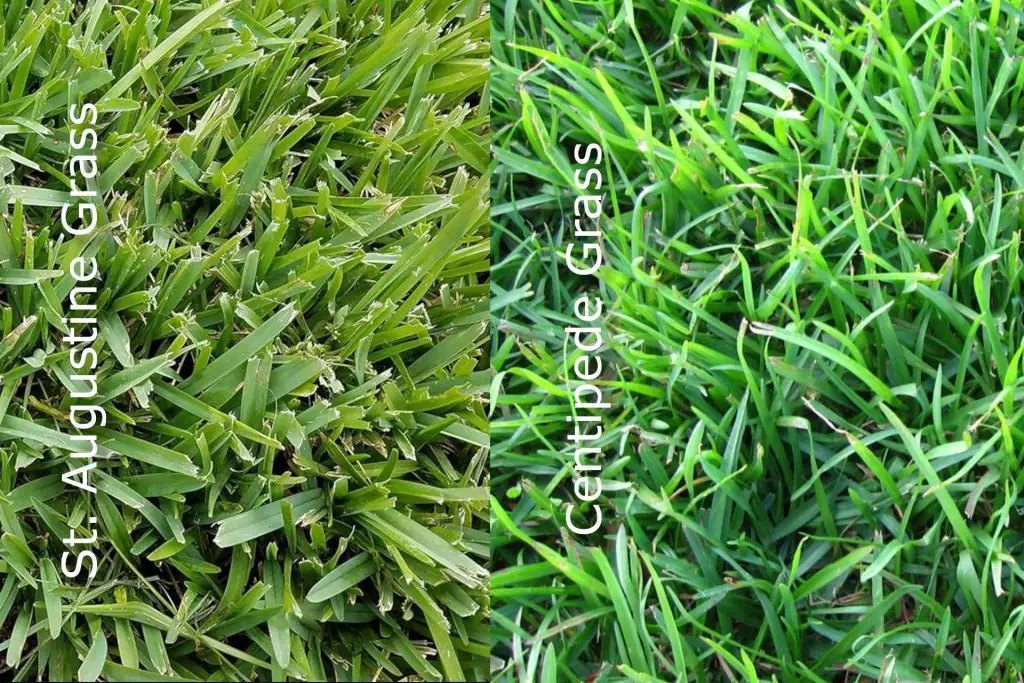
Below, we’ll delve deep into the nuances of these two grass types, comparing them on multiple fronts—price, eco-friendliness, climate adaptability, and more. We’ll explore their root structures, growth patterns, and even how they stand up to pests and fungal diseases. By the end, you’ll have a well-rounded understanding to make an informed choice tailored to your specific lawn goals and soil requirements.
Why should you care? Well, the grass you choose will significantly influence your watering needs, fertilization schedule, and overall maintenance level. Opting for a grass that aligns with your local climate zones can save you time, money, and contribute to water conservation. On the flip side, a poor choice can lead to endless headaches and a lawn that’s more weed than turf.
So, are you ready to make a decision that will impact your lawn for years to come? Let’s dig in and discover which grass type—Centipede or St. Augustine—will lay the foundation for your dream lawn.
This introduction aims to set the stage for an in-depth exploration of Centipede and St. Augustine grasses, helping you make a choice that suits your lifestyle, budget, and environmental considerations.
Understanding Grass Types
When it comes to creating a lush, inviting lawn, the type of grass you choose plays a pivotal role. In this section, we’ll introduce you to two popular options: Centipede Grass and St. Augustine Grass. Both have their unique characteristics, common uses, and ideal growing conditions. Understanding these aspects will help you make an informed decision that aligns with your lawn quality goals and soil compatibility.
What is Centipede Grass?
Originating from China and Southeast Asia, Centipede Grass is a warm-season grass that has gained popularity in the southeastern United States. It’s known for its low maintenance requirements and drought tolerance. The grass has a light green color and a coarse texture, making it less plush compared to other grass types.
Key Characteristics of Centipede Grass:
- Low Fertilizer Needs: Thrives even in poor, acidic soils with low nitrogen levels.
- Shallow Root System: Allows for easy mowing and less soil disruption.
- Slow Growth Rate: Requires less frequent mowing.
What is St. Augustine Grass?
Native to the tropical regions, St. Augustine Grass is a favorite for lawns in warmer climates, including coastal areas. It boasts a dark green hue and a broad leaf, giving it a plush appearance. Unlike Centipede, St. Augustine has a more aggressive growth pattern, thanks to its root structure, which consists of stolons that spread above ground.
Key Characteristics of St. Augustine Grass:
- High Water Requirements: Needs regular watering, especially during the summer growing season.
- Weed Suppression: The dense growth helps in natural weed suppression.
- Salt Tolerance: Ideal for coastal areas where salt spray is a concern.
Grass Characteristics Comparison
| Feature | Centipede Grass | St. Augustine Grass |
|---|---|---|
| Color | Light Green | Dark Green |
| Texture | Coarse | Plush |
| Growth Pattern | Slow, non-aggressive | Fast, aggressive |
| Water Needs | Low | High |
| Fertilizer Needs | Low | Moderate to High |
By understanding the fundamental characteristics of Centipede and St. Augustine grass, you’re better equipped to assess how each type aligns with your specific lawn care strategies and environmental impact considerations. Whether you prioritize water conservation, ease of maintenance, or the lushness of your lawn, these insights will guide you in making a choice that complements your lifestyle and local conditions.
Price Comparison
When it comes to establishing a new lawn or renovating an existing one, price often becomes a deciding factor. In terms of tghe Centipede vs St Augustine Grass comparison, both Centipede Grass and St. Augustine Grass come with their own set of costs, ranging from the initial sod installation to long-term maintenance. In this section, we’ll break down the financial aspects of these two popular grass types, helping you make a choice that aligns with your budget considerations.
Cost of Centipede Grass
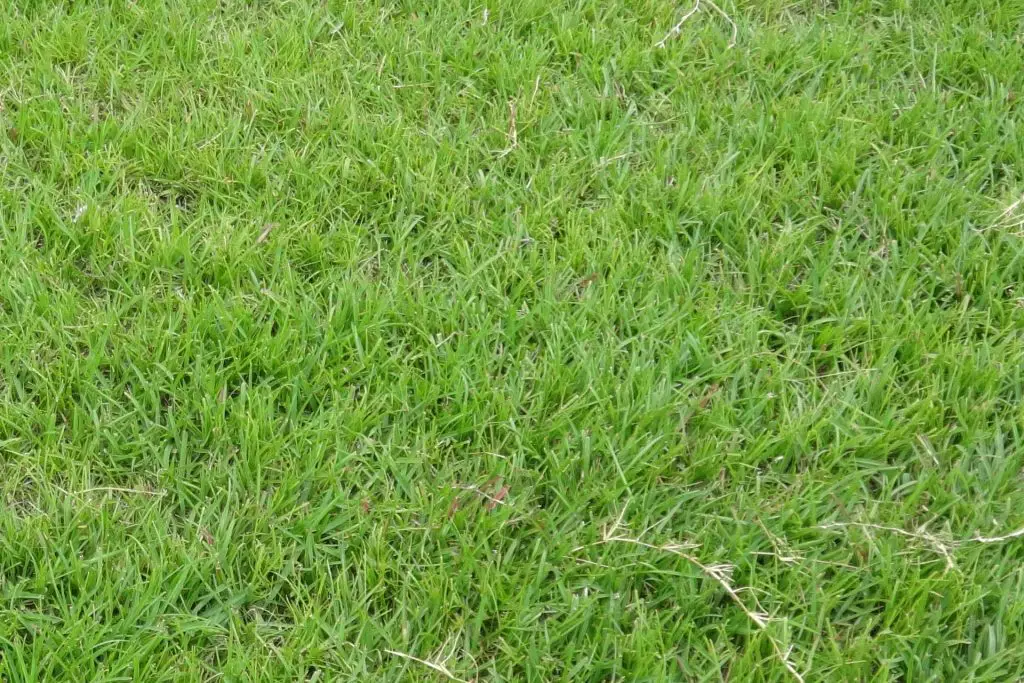
Centipede Grass is generally more budget-friendly, especially when considering its low fertilizer needs and drought tolerance. The initial cost for Centipede sod (as off 2023) ranges from $0.50 to $0.75 per square foot. However, the overall lawn investment can be lower due to its minimal upkeep requirements.
Factors Affecting Centipede Grass Cost:
- Soil Preparation: Minimal soil amendments needed.
- Installation: DIY-friendly, reducing labor costs.
- Maintenance: Infrequent mowing and fertilization.
Cost of St. Augustine Grass
St. Augustine Grass is on the pricier side, with sod costs (as off 2023) averaging between $0.80 and $1.20 per square foot. The additional costs can also add up, given its higher watering needs and fertilizer requirements.
Factors Affecting St. Augustine Grass Cost:
- Soil Preparation: May require pH balancing and nutrient-rich soil.
- Installation: Typically requires professional installation.
- Maintenance: Regular mowing, watering, and fertilization.
Price Comparison
| Expense Type | Centipede Grass | St. Augustine Grass |
|---|---|---|
| Sod Price per Sq Ft | $0.50 – $0.75 | $0.80 – $1.20 |
| Soil Preparation | Low | Moderate to High |
| Installation Costs | Low (DIY-friendly) | High (Professional) |
| Long-term Maintenance | Low | Moderate to High |
Cost implications of your grass choice are likely to be a major consideration. While Centipede Grass may offer a more economical upfront investment, St. Augustine Grass might align better with those looking for a lush, dense lawn and are willing to invest in its upkeep. By considering both the initial and ongoing costs, you can select a grass type that doesn’t just suit your lawn but also your wallet.
Eco-Friendliness
In today’s world, eco-friendliness is more than a buzzword; it’s a responsibility. As you weigh the pros and cons of Centipede Grass and St. Augustine Grass, considering their environmental impact can make your decision not just smart but also sustainable. This section will delve into how each grass type fares in terms of environmental impact, water conservation, and pest control.
Eco-Friendly Aspects of Centipede Grass
Centipede Grass is often lauded for its low environmental footprint. Its drought tolerance means less reliance on water, a crucial factor in areas prone to water scarcity. Additionally, its low nitrogen requirements translate to less fertilizer use, reducing the runoff that can pollute waterways.
Eco-Friendly Features of Centipede Grass:
- Low Water Usage: Ideal for regions with water restrictions.
- Minimal Fertilizer Needs: Less chemical runoff into local ecosystems.
- Natural Pest Resistance: Fewer pesticides required, reducing soil and water pollution.
Eco-Friendly Aspects of St. Augustine Grass
St. Augustine Grass has its own set of eco-friendly attributes. Its dense growth pattern aids in weed suppression, reducing the need for chemical herbicides. However, it does require more water and fertilizer, which can be a concern in terms of resource consumption and environmental impact.
Eco-Friendly Features of St. Augustine Grass:
- Weed Suppression: Natural resistance to weeds minimizes herbicide use.
- Salt Tolerance: Suitable for coastal areas, reducing the need for specialized, potentially harmful treatments.
- Organic Fertilizer Options: Can thrive with organic fertilizers, offering a greener alternative.
Eco-Friendliness Comparison
| Environmental Factor | Centipede Grass | St. Augustine Grass |
|---|---|---|
| Water Usage | Low | Moderate to High |
| Fertilizer Needs | Low | Moderate to High |
| Pesticide Requirements | Low | Moderate |
When it comes to making an eco-conscious choice, both Centipede and St. Augustine grasses have their merits and drawbacks. Centipede Grass stands out for its low resource consumption, while St. Augustine offers natural weed control. By aligning your choice with your environmental values and local climate conditions, you can enjoy a beautiful lawn that’s also kind to Mother Earth.
Climate Adaptability
Selecting a grass type that thrives in your local climate is essential for a healthy, low-maintenance lawn. Both Centipede Grass and St. Augustine Grass are warm-season grasses, but their climate adaptability varies. This section will explore how each grass type performs in different weather conditions, temperature ranges, and soil types, helping you make a choice that harmonizes with your local environment.
Climate Adaptability of Centipede Grass
Centipede Grass is a champion of adaptability, particularly in the southeastern United States. It thrives in acidic soils and can tolerate partial shade, although it prefers full sun. Its drought resistance makes it a suitable choice for areas with hot, dry summers.
Climate-Friendly Features of Centipede Grass:
- Heat Tolerance: Can withstand high temperatures without significant water input.
- Shade Tolerance: Grows well even in areas with partial shade.
- Soil Versatility: Adapts to a variety of soil types, including sandy and acidic soils.
Climate Adaptability of St. Augustine Grass
St. Augustine Grass is well-suited for humid, coastal areas and is particularly popular in the southern regions of the United States. It has a high salt tolerance, making it ideal for homes near the ocean. However, it is less tolerant of extreme heat and drought conditions.
Climate-Friendly Features of St. Augustine Grass:
- Humidity Tolerance: Thrives in humid conditions, making it ideal for tropical climates.
- Salt Tolerance: Well-suited for coastal areas.
- Shade Tolerance: Performs well in partial to full sun, with some varieties even suitable for full shade.
Climate Adaptability Comparison
| Climate Factor | Centipede Grass | St. Augustine Grass |
|---|---|---|
| Heat Tolerance | High | Moderate |
| Shade Tolerance | Moderate | High |
| Soil Versatility | High | Moderate |
Your local climate should play a significant role in your decision-making process. Centipede Grass offers robust heat and drought tolerance, making it a strong contender for hot, dry climates. On the other hand, St. Augustine shines in humid, coastal regions. By aligning your choice with your area’s climate characteristics, you can ensure a resilient, thriving lawn that will be the envy of your neighborhood
Climate Zones Suitable for Centipede and St. Augustine Grass

- Blue Circle: Indicates suitability for Centipede grass.
- Red Triangle: Indicates suitability for St. Augustine grass.
| State | Centipede Suitable | St. Augustine Suitable |
|---|---|---|
| Florida | True | True |
| Georgia | True | True |
| South Carolina | True | True |
| North Carolina | True | False |
| Alabama | True | True |
| Mississippi | True | True |
| Louisiana | True | True |
| Texas | False | True |
Best Time to Plant Centipede or St. Augustine Grass
When it comes to establishing a lush, green lawn, timing is everything. Knowing the best time to plant Centipede or St. Augustine grass can make a significant difference in the success of your lawn.
Centipede Grass
For Centipede grass, the optimal planting time is late spring to early summer. This warm-season grass thrives in temperatures between 75-90°F. Planting during this period allows the grass to establish its root system before the colder months arrive.
- Seed: Late April to July
- Sod: May to September
St. Augustine Grass
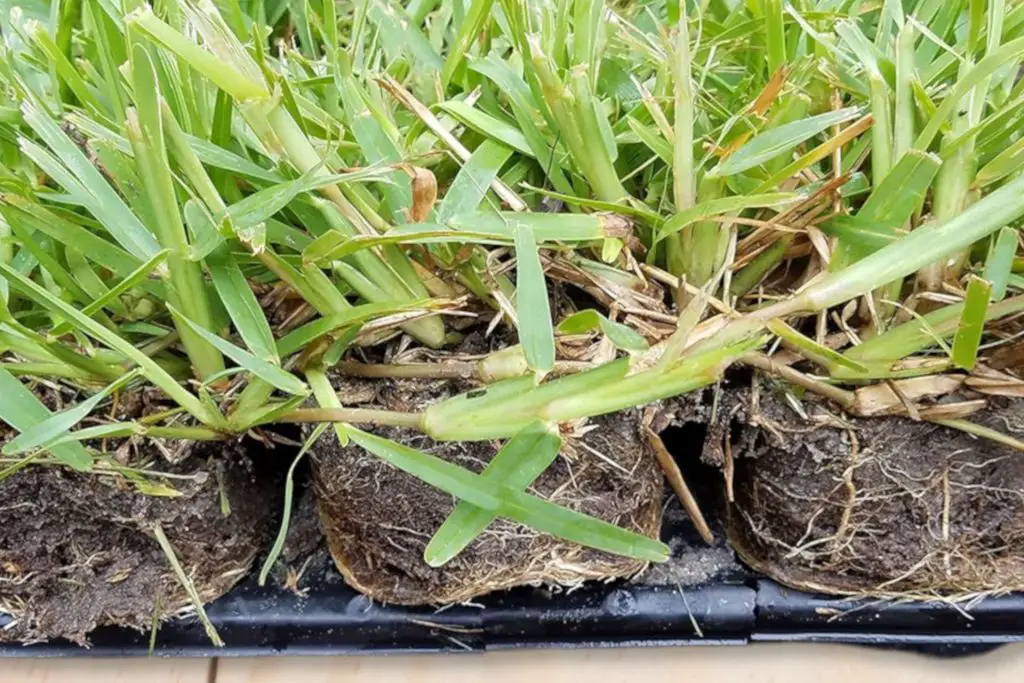
St. Augustine grass prefers a similar climate but has a slightly different planting window. The best time to plant is late spring, just as the soil temperatures are rising above 70°F.
- Seed: Rarely seeded, usually propagated through plugs or sod
- Sod or Plugs: Late March to September
Factors to Consider
- Soil Temperature: Both grass types require a soil temperature above 65°F for optimal growth.
- Rainfall: Adequate moisture is crucial. Check the weather forecast to ensure there’s no prolonged dry spell immediately after planting.
- Frost: Avoid planting close to the first or last frost dates in your area.
Quick Tips
- Soil Test: Always conduct a soil test to determine the pH and nutrient levels.
- Preparation: Till the soil and remove any debris or weeds.
- Watering: Keep the soil consistently moist but not waterlogged.
By planting at the right time and taking into consideration the unique needs of each grass type, you can set the stage for a healthy, vibrant lawn. Whether you choose Centipede or St. Augustine, understanding the optimal planting times is key to your lawn’s success.
Caring Strategies
A beautiful lawn doesn’t just happen; it’s the result of thoughtful care and maintenance. While both Centipede Grass and St. Augustine Grass are warm-season varieties, their caring strategies differ significantly. This section will guide you through the optimal maintenance practices for each, covering irrigation, fertilization, and mowing schedules.
Caring for Centipede Grass
Centipede Grass is often termed the “lazy man’s grass” due to its low maintenance requirements. It thrives in acidic soils and doesn’t demand much in terms of water or nutrients. However, it does have specific needs that, when met, can make your lawn truly stand out.
Centipede Grass Care Tips:
- Watering: Infrequent but deep watering is key. Aim for 1 inch of water per week.
- Fertilization: A single annual application of a balanced fertilizer is usually sufficient.
- Mowing: Keep the grass height between 1.5 to 2 inches for optimal health.
Caring for St. Augustine Grass
St. Augustine Grass requires a more hands-on approach. Its lush, dense growth is beautiful but demands regular maintenance to keep it that way. Unlike Centipede, St. Augustine has higher water and nutrient needs.
St. Augustine Grass Care Tips:
- Watering: Requires more frequent watering, especially during hot months. Aim for 1.5 inches per week.
- Fertilization: Monthly applications of a nitrogen-rich fertilizer are recommended during the growing season.
- Mowing: Maintain a grass height of 2.5 to 4 inches to encourage dense growth.
- Dethatching: Removing thatch from St Augustine grass lawn two or three times a year
Caring Strategies Comparison
| Care Aspect | Centipede Grass | St. Augustine Grass |
|---|---|---|
| Watering Frequency | Low | High |
| Fertilizer Needs | Low | Moderate to High |
| Optimal Mowing Height | 1.5-2 inches | 2.5-4 inches |
As with cost the distinct care requirements of Centipede and St. Augustine grasses will may well impact your choice as well as help you tailor your lawn care routine. Whether you prefer a low-maintenance option like Centipede or are willing to invest more time and resources into a lush St. Augustine your lawn quality objectives also need consideration. Your choice will dictate not just the look of your lawn, but also the time and effort you’ll invest in its upkeep
Root Structure and Growth Patterns
The root structure and growth patterns of your chosen grass type are foundational to its overall health and appearance. These factors influence everything from water absorption to nutrient uptake and even resilience against pests. In this section, we’ll delve into the unique root systems and growth behaviors of Centipede Grass and St. Augustine Grass, providing you with insights that can guide your lawn care decisions.
Root Structure of Centipede Grass
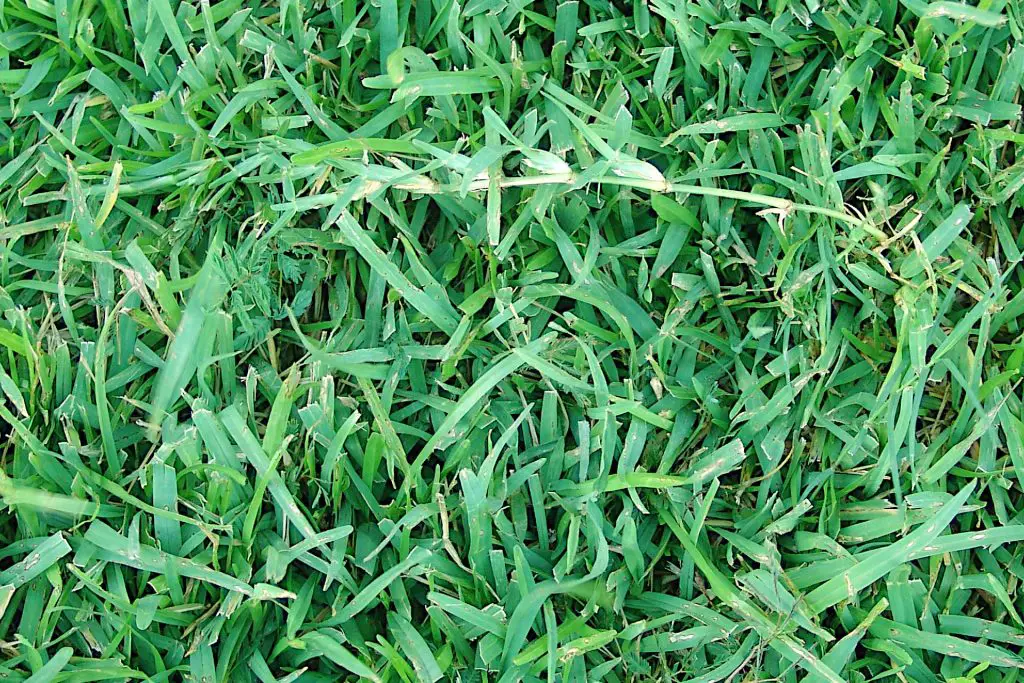
Centipede Grass is known for its shallow root system, which allows it to spread laterally across the ground. While this makes it easier to establish and maintain, it also means the grass is less adept at sourcing water from deeper soil layers.
Key Aspects of Centipede Grass Root Structure:
- Horizontal Growth: Spreads laterally, covering ground effectively.
- Shallow Roots: Limits the grass’s ability to access deep water reserves.
- Low Nutrient Uptake: The shallow roots require less nutrient-rich soil.
Root Structure of St. Augustine Grass
St. Augustine Grass has a more complex root system featuring stolons, which are horizontal stems that grow above ground. These stolons enable the grass to establish quickly and form a dense carpet, but they also demand more nutrients and water.
Key Aspects of St. Augustine Grass Root Structure:
- Stoloniferous Growth: Enables rapid establishment and dense coverage.
- Deeper Roots: Allows for better water and nutrient absorption.
- High Nutrient Demand: Requires more fertile soil for optimal growth.
Root Structure and Growth Pattern Comparison
| Root and Growth Aspect | Centipede Grass | St. Augustine Grass |
|---|---|---|
| Root Depth | Shallow | Moderate to Deep |
| Growth Pattern | Horizontal, Non-Aggressive | Horizontal, Aggressive |
| Nutrient Uptake | Low | High |
Appreciating the root structure and growth patterns of Centipede and St. Augustine grasses can significantly influence your lawn management strategies. If you’re looking for a grass type that’s easy to establish and requires less intensive care, Centipede Grass may be your go-to. However, if you’re aiming for a lush, thick lawn and are willing to invest in regular maintenance, St. Augustine Grass could be the better fit. Your choice will not only affect the visual appeal of your lawn but also its long-term health and resilience.
Pests and Fungal Diseases
A vibrant lawn is a joy to behold, but it’s also a magnet for various pests and fungal diseases. Both Centipede Grass and St. Augustine Grass have their own sets of vulnerabilities and resistances when it comes to these lawn challenges. Understanding these can help you preempt issues and maintain a healthy, thriving lawn.
Pests and Diseases in Centipede Grass
Centipede Grass is generally hardy but isn’t entirely immune to problems. It’s susceptible to lawn grubs and nematodes, which can cause yellowing and thinning of the grass. Fungal issues like dollar spot and brown patch can also occur, especially in humid conditions.
Common Pests and Diseases in Centipede Grass:
- Lawn Grubs: Feed on grass roots, causing yellow patches.
- Nematodes: Microscopic worms that affect root health.
- Dollar Spot: Causes small, silver-dollar-sized brown spots.
Pests and Diseases in St. Augustine Grass
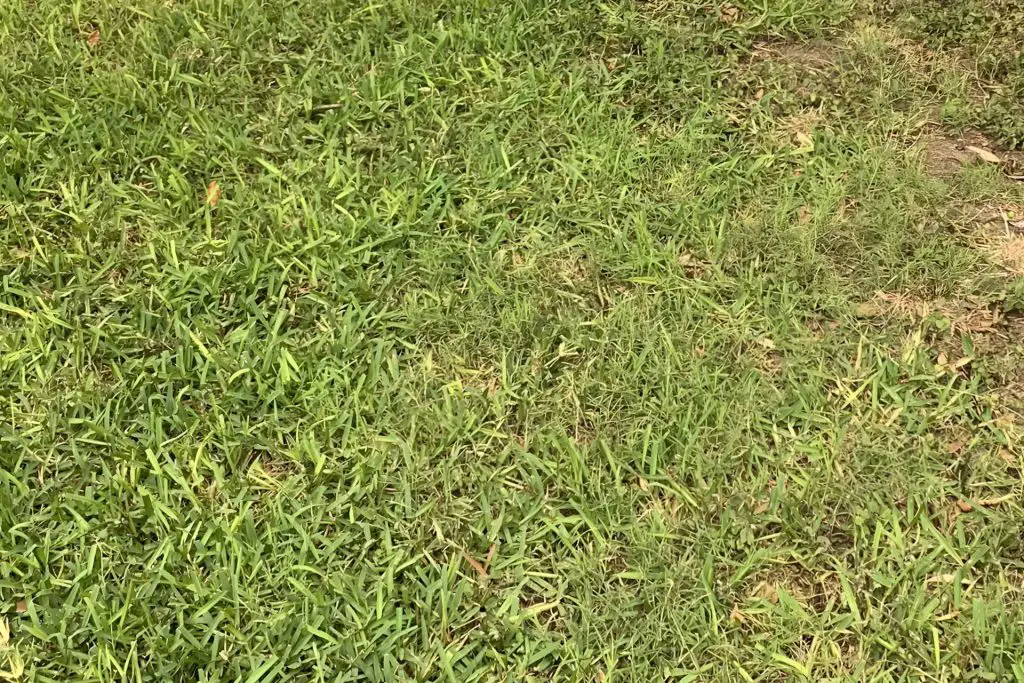
St. Augustine Grass, while lush and beautiful, is prone to its own set of challenges. The main problems with St Augustine Grass stem from pests like chinch bugs and sod webworms. In addition, it can be susceptible to fungal diseases like gray leaf spot and take-all root rot on .
Common Pests and Diseases in St. Augustine Grass:
- Chinch Bugs: Suck the sap from grass, leading to brown patches.
- Sod Webworms: Chew on grass blades, causing irregular brown spots.
- Gray Leaf Spot: Leads to grayish spots with dark borders on grass blades.
Pests and Fungal Diseases Comparison
| Pest or Disease Type | Centipede Grass | St. Augustine Grass |
|---|---|---|
| Common Pests | Lawn Grubs, Nematodes | Chinch Bugs, Sod Webworms |
| Frequent Diseases | Dollar Spot, Brown Patch | Gray Leaf Spot, Take-All Root Rot |
Being aware of the potential pests and diseases that could affect your chosen grass type is crucial for effective lawn care management. Both Centipede and St. Augustine grasses have their own sets of challenges, but with the right preventive measures and treatments, these issues can be managed or even avoided. Whether you opt for the low-maintenance Centipede or the lush St. Augustine, understanding their vulnerabilities will help you keep your lawn in peak condition year-round.
Wrapping Up: Centipede vs St Augustine Grass
Choosing between Centipede Grass and St. Augustine Grass is more than a matter of personal preference; it’s about aligning your choice with your lawn’s specific needs and your own lawn care goals. Whether you prioritize eco-friendliness, climate adaptability, or ease of care, both grass types offer distinct advantages and challenges.
Centipede Grass stands out for its low maintenance requirements and environmental sustainability. It performs well in sandy, acidic soils’s an excellent choice for homeowners who want a decent lawn without investing too much time or resources. On the other hand, St. Augustine Grass is well-suited to the warm, humid conditions and offers visual appeal and density, albeit at the cost of higher maintenance and resource needs.
It’s crucial to consider factors like local climate conditions, soil type, and pest vulnerabilities when making your decision. Your choice will influence not just the aesthetic quality of your lawn, but also its long-term health and your own quality of life. After all, a well-chosen lawn can offer not just beauty but also a space for relaxation and recreation.
In summary, both Centipede and St. Augustine grasses have their merits. Your final decision should be a balanced one, taking into account both the practical aspects and your personal preferences. With the right choice and proper care, your lawn can become more than just a patch of grass—it can be a thriving outdoor space that enhances your home and lifestyle.
Related Articles
Choosing the Right Grass in Texas for the Perfect Lone Star Lawn
